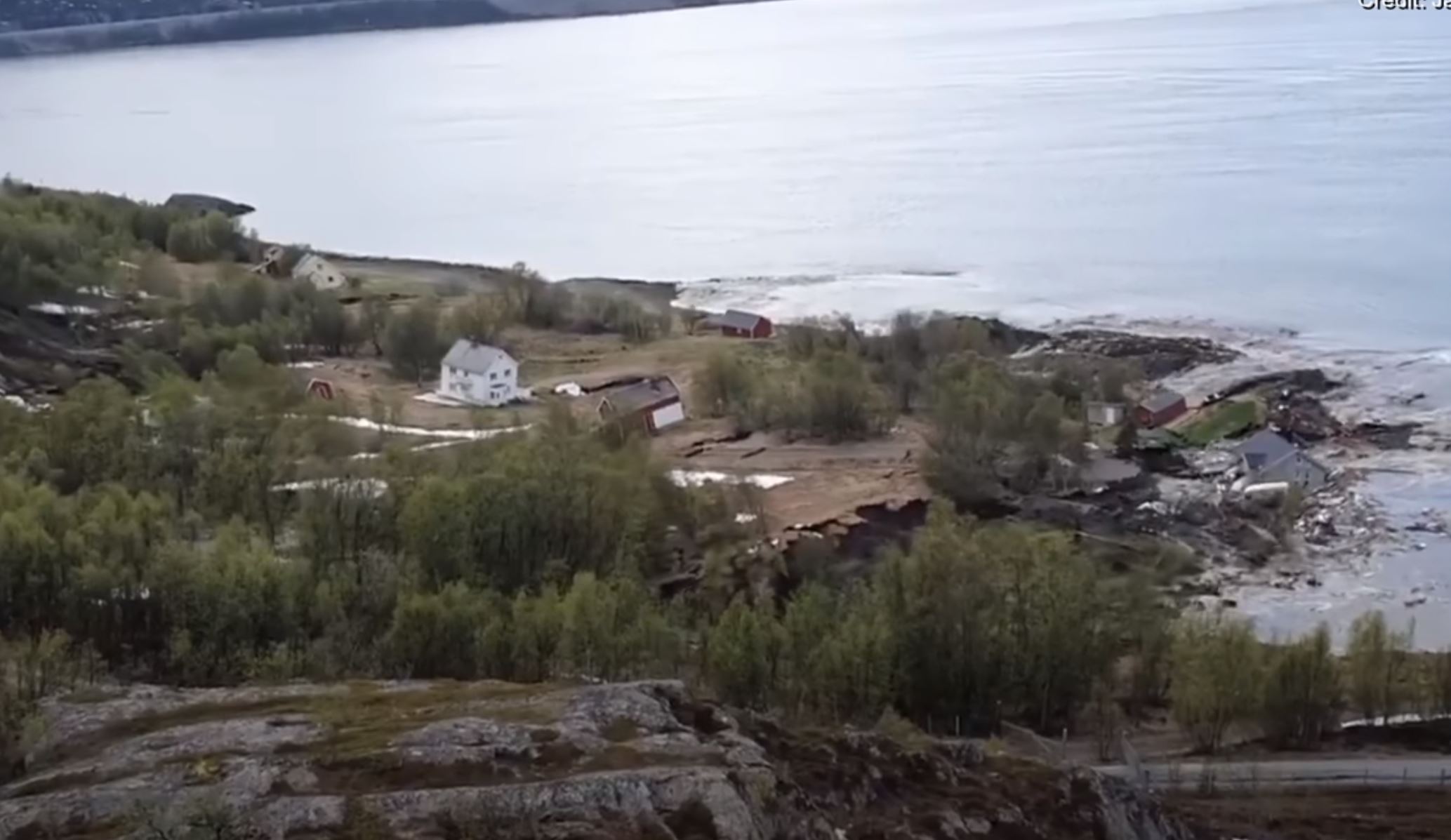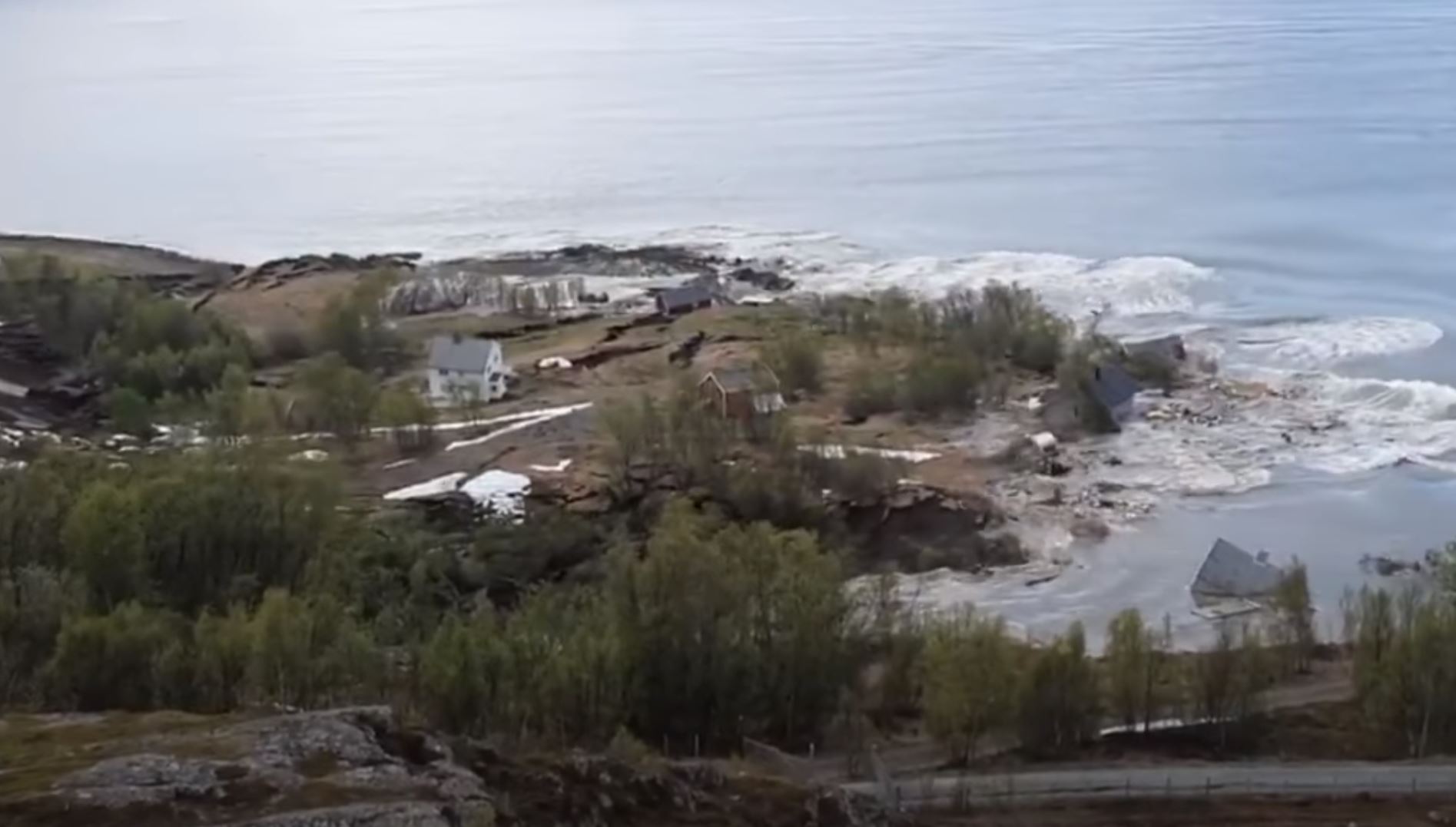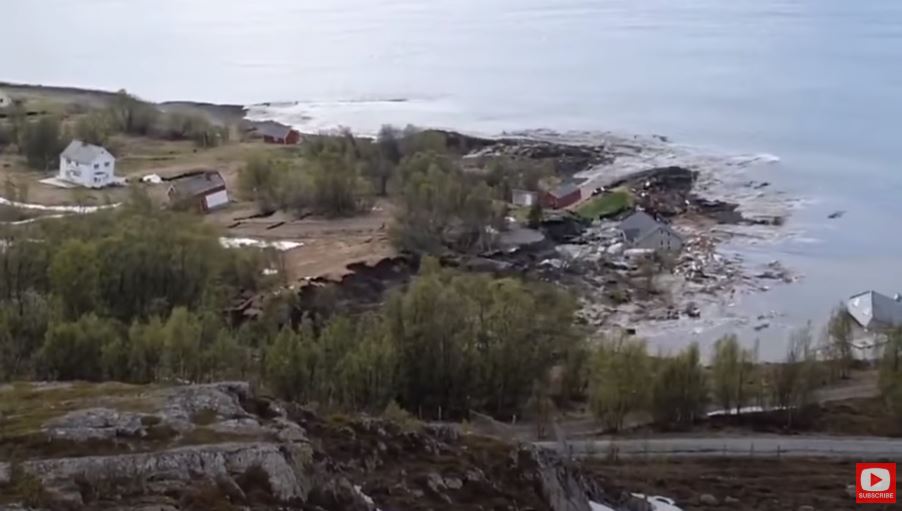4 June 2020
Alta: a truly remarkable video of a quick clay landslide in Norway
Posted by Dave Petley
Alta: a truly remarkable video of a quick clay landslide in Norway
One of the top ten landslide videos of all time was captured yesterday at Kråknes in Alta, in the north of Norway. This video shows what is almost certain to be a quick clay landslide. It occurred in the morning of Wednesday 3 June 2020; the video has been posted to Youtube. If this video ceases working then it can also be viewed here.
.
VG.no has an article (in Norwegian) that explains the context of the video. It was collected by the owner of one of the houses, Jan Egil Bakkeby. He notes that they saw a tension crack downslope from their cabin on Tuesday evening, but chose to stay overnight. It rained on Wednesday morning, after which the landslide occurred. He fled from the house and climbed the hill, and then shot the video.
The landslide appears to have occurred as a coherent raft in the first instance:-

The initial phases of the Alta quick clay landslide. Still from a Youtube video collected by Jan Egil Bakkeby.
.
There is a change in gradient of the underlying bedrock towards the sea, which caused the raft to start to fragment in the latter stages:-

The latter phases of the Alta quick clay landslide. Still from a Youtube video collected by Jan Egil Bakkeby.
.
There is a great deal of valuable information in the video about the behaviour of the landslide itself, and the way that it generated a displacement wave.
I suspect that this was the second phase of the landslide. The very early shots seem to show considerable existing damage at the front of the slide, on the right side of this screenshot:-

The very early phases of the Alta quick clay landslide. Still from a Youtube video collected by Jan Egil Bakkeby.
.
Quick clays are glaciomarine materials that have strange properties. When disturbed they are very weak – indeed their behaviour is similar to that of a fluid. But undisturbed they are much stronger, primarily because of the role of salt, which glues the particle structure together. When this structure is disturbed, the quick clay rapidly weakens, allowing these spectacular landslides to form.
I have featured a number of other quick clay landslides over the years, including examples from Sweden, Norway and Canada, and a similar type of landslide from Brazil. The most famous example is the Rissa landslide, also in Norway, for which another excellent video is available.
.
On reflection 1: Further landslides at Eastchurch in Kent
Yesterday further failures occurred at Eastchurch in Kent, the site of the coastal landslide that destroyed a house over the weekend. Further properties are now at risk.
.
On reflection 2: saving lives at Brumadinho
An interesting paper is available for online review in the journal NHESS looking at ways in which lives could have been saved during the Brumadinho tailings dam failure last year.
.
Acknowledgement
Many thanks to the various people who highlighted this to me via this site, by email and on Twitter. Your help is much appreciated.


 Dave Petley is the Vice-Chancellor of the University of Hull in the United Kingdom. His blog provides commentary and analysis of landslide events occurring worldwide, including the landslides themselves, latest research, and conferences and meetings.
Dave Petley is the Vice-Chancellor of the University of Hull in the United Kingdom. His blog provides commentary and analysis of landslide events occurring worldwide, including the landslides themselves, latest research, and conferences and meetings.
Keep sharing these Dave.
So many of us appreciate the collation of these stories.
Sadly, the video appears to have been ‘blocked’ by YouTube on ‘copyright grounds, but it is still viewable with Norwegian commentary at the second link you;ve given.
Mention should be made of the ongoing, down-dip landslide taking place at Portuguese Bend in the Palos Verdes area of Los Angeles County in California.
It is enabled by a conformable layer of Bentonitic clays derived from volcanic ash deposited sometime around the early Miocene, ISTR.
Unlike the Alta event, this example has been moving gradually over a period of decades.
Photographs 1 and 3 are exactly the same – slightly different crop but same shot.
I noted that there was a lot of debris and a floating house to the right at the end of this video. This may have been the last one in a sequence.
The video is available here
The video is available here
https://www.youtube.com/watch?v=3q-qfNlEP4A
There is more video taken by Jan Egil Bakkeby in this YouTube video. He apparently took some video when he was at his cabin starting to notice the cracks forming in the driveway and growing. He realized he needed to get away and started running up the hill. The main video he took from the top of the hill is the same. There is additional footage at the end taken from a drone, maybe also by Jan Egil Bakkeby. It looks like he realized that his drone was too close to coast guard helicopter near the end and moved it away.
https://www.youtube.com/watch?v=1Fmpv8mt4ag
Thank you so much for posting….. As you say, very many lessons in that video. The speed is truely frightening and gives real context to the really very slow landslides that impact on parts of Tasmania.
Could this also have been affected by warming?
The Russian power Station fuel tank collapse the same month, put down to melting of permafrost was a little worrying.
Many thanks,
I have a question; can it be, that the cause of the landslide was because the defrosting of permafrost in the subsurface?